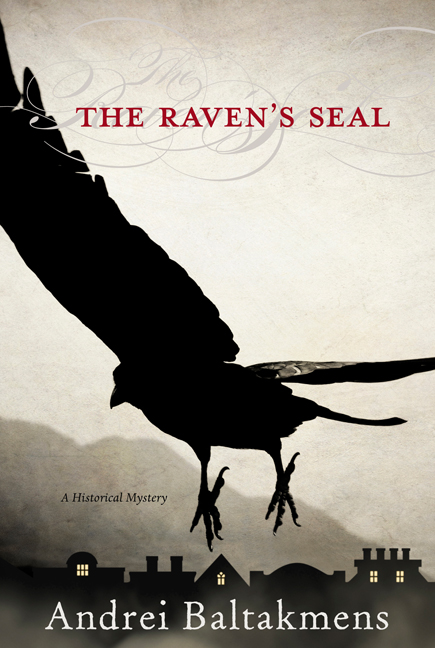
by fljustice | Nov 29, 2012 | Books, Fiction, Free stuff, Guest Post, History
Guest Post: Early-Modern Crime (and Punishment) in “The Raven’s Seal”
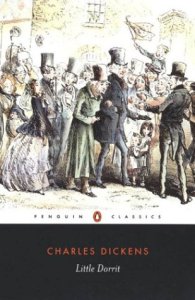 I’m back from New Zealand and–totally by coincidence–I’m hosting a New Zealand author. As readers of this blog know, I’m a Dickens fan. I can’t get enough of his quirky characters, dark settings, twisty plots and–yes!–even his social preaching. One of my favorites, Little Dorritt (reviewed here) features a debtor’s prison which is just as much a character as its human inhabitants. That’s why I was so pleased to score a copy of The Raven’s Seal a historical mystery written in the style of Dickens. The author Andrei Baltakmens is a Dickens scholar and plants an eighteenth-century prison in the heart of his novel. The gaol (jail for us in the US) broods over the prose and lurks in the background infusing the story with its dark presence. From the first paragraph:
I’m back from New Zealand and–totally by coincidence–I’m hosting a New Zealand author. As readers of this blog know, I’m a Dickens fan. I can’t get enough of his quirky characters, dark settings, twisty plots and–yes!–even his social preaching. One of my favorites, Little Dorritt (reviewed here) features a debtor’s prison which is just as much a character as its human inhabitants. That’s why I was so pleased to score a copy of The Raven’s Seal a historical mystery written in the style of Dickens. The author Andrei Baltakmens is a Dickens scholar and plants an eighteenth-century prison in the heart of his novel. The gaol (jail for us in the US) broods over the prose and lurks in the background infusing the story with its dark presence. From the first paragraph:
“The Old Bellstrom Gaol crouched above the fine city of Airenchester like a black spider on a heap of spoils. It presided over The Steps, a ramshackle pile of cramped yards and tenements teeming about rambling stairs, and glared across the River Pentlow towards Battens Hill, where the sombre courts and city halls stood. From Cracksheart Hill, the Bellstrom loomed on every prospect and was glimpsed at the end of every lane.”
Many thanks to Andrei for providing a guest post on eighteenth-century crime and punishment and to his publisher Top Five Books for providing a giveaway copy (details at the end of the post.) (more…)
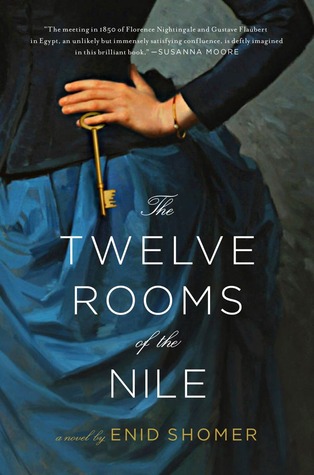
by fljustice | Oct 17, 2012 | Books, Fiction, Free stuff, Guest Post, Wonderful Women
Guest Post: Enid Shomer on “The Twelve Rooms of the Nile”
 I just finished The Twelve Rooms of the Nile, a novel about the imagined meeting of Florence Nightingale and Gustave Flaubert when they both traveled the fabled river–before they became famous. It’s a lovely literary effort with wonderful insights into two intriguing characters. I’m pleased to host a guest post by the author Enid Shomer where she tells us how she came to know both these remarkable people and write about them. Ms. Shomer’s short fiction and poetry has appeared in The New Yorker, The Atlantic and The Paris Review among other publications. This is her first novel. Thanks to her publisher Simon and Schuster for providing two copies of this book for a giveaway (details at the end of the post.) If you want to learn more about Ms. Shomer and her writing, please visit her website. Enjoy! (more…)
I just finished The Twelve Rooms of the Nile, a novel about the imagined meeting of Florence Nightingale and Gustave Flaubert when they both traveled the fabled river–before they became famous. It’s a lovely literary effort with wonderful insights into two intriguing characters. I’m pleased to host a guest post by the author Enid Shomer where she tells us how she came to know both these remarkable people and write about them. Ms. Shomer’s short fiction and poetry has appeared in The New Yorker, The Atlantic and The Paris Review among other publications. This is her first novel. Thanks to her publisher Simon and Schuster for providing two copies of this book for a giveaway (details at the end of the post.) If you want to learn more about Ms. Shomer and her writing, please visit her website. Enjoy! (more…)

by fljustice | Jul 7, 2012 | Books, Fiction, Free stuff, Reviews
“The Seven Wonders” by Steven Saylor
 Gordianus the Finder is back in this prequel to Steven Saylor’s popular series of mysteries set in the Roman Republic of Cicero and Caesar. Gordianus is eighteen and embarks on the First Century BCE equivalent of a “Grand Tour” with his old tutor and famous poet Antipater of Sidon. As the Italian peninsula simmers with rebellion, the pair head east to visit the Seven Wonders of the World encountering murder, mysteries and political intrigues. Over the course of their year-plus journey, Gordianus evolves into “the Finder” series readers have come to know and love.
Gordianus the Finder is back in this prequel to Steven Saylor’s popular series of mysteries set in the Roman Republic of Cicero and Caesar. Gordianus is eighteen and embarks on the First Century BCE equivalent of a “Grand Tour” with his old tutor and famous poet Antipater of Sidon. As the Italian peninsula simmers with rebellion, the pair head east to visit the Seven Wonders of the World encountering murder, mysteries and political intrigues. Over the course of their year-plus journey, Gordianus evolves into “the Finder” series readers have come to know and love.
For the record, I am not a Gordianus fan. I very much enjoyed Saylor’s multi-generational epics Roma and Empire, which I reviewed, but didn’t take to the couple of Finder novels I sampled. Not because they were bad books, but because I’m not that into historical mysteries. Every reader has her quirks. This book has a distinctly different structure from the others. Saylor uses the journey to visit the Seven Wonders as a framework for several short stories (many of which were previously published in mystery and fantasy magazines.) Each Wonder gets a story with a few interludes, such as attending the Olympic Games and visiting the ruins of Corinth, resulting in ten chapters dealing with murder, witchcraft, ghosts and gods. As their journey continues, a larger mystery entangles Gordianus and Antipater with spies and other enemies of Rome. (more…)

by fljustice | May 21, 2012 | Biographies, Books, Reviews, Wonderful Women
“The Kings’ Mistresses” by Elizabeth C. Goldsmith
 I love a good story about women pushing the boundaries in times past, especially when they are based on real people. The Kings’ Mistresses is the true tale of two sisters: Marie Mancini and her younger sister Hortense, the nieces of one of the most powerful men in seventeenth century France, Cardinal Mazarin (a protégé of Richelieu.) Mazarin, rose from obscure roots in Rome to become Prime Minister to the Queen Regent of France, Anne of Austria and her son Louis XIV. Along the way he acquired great wealth as well as influence and enemies. He hoped to consolidate his influence by the well-known ploy of strategic marriage, so he summoned his Italian nieces and nephews to the French court. In 1653 Marie, “a dark-haired and intelligent-looking adolescent of thirteen” and Hortense, “a mere child of six, with curly black hair and striking in her delicate beauty” left their home in Rome to travel to Paris. It was the first of many journeys in their fascinating lives. (more…)
I love a good story about women pushing the boundaries in times past, especially when they are based on real people. The Kings’ Mistresses is the true tale of two sisters: Marie Mancini and her younger sister Hortense, the nieces of one of the most powerful men in seventeenth century France, Cardinal Mazarin (a protégé of Richelieu.) Mazarin, rose from obscure roots in Rome to become Prime Minister to the Queen Regent of France, Anne of Austria and her son Louis XIV. Along the way he acquired great wealth as well as influence and enemies. He hoped to consolidate his influence by the well-known ploy of strategic marriage, so he summoned his Italian nieces and nephews to the French court. In 1653 Marie, “a dark-haired and intelligent-looking adolescent of thirteen” and Hortense, “a mere child of six, with curly black hair and striking in her delicate beauty” left their home in Rome to travel to Paris. It was the first of many journeys in their fascinating lives. (more…)
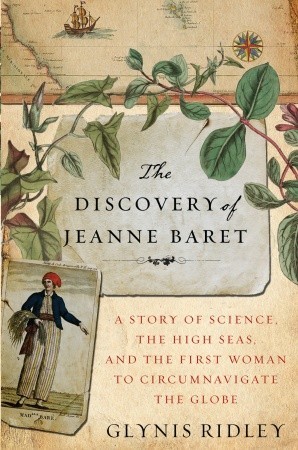
by fljustice | Feb 29, 2012 | Biographies, Books, Free stuff, Guest Post, History, Wonderful Women
Guest Post: Glynis Ridley on “The Discovery of Jeanne Baret”
 I’ve been in rewrite mode lately and ignoring my blog. But just in time for Women’s History Month, Glynis Ridley has kindly stepped in with a guest post talking about her non-fiction adventure story The Discovery of Jeanne Baret: A Story of Science, the High Seas, and the First Woman to Circumnavigate the Globe. I first ran across Jeanne Baret’s remarkable story in another book She Captains: Heroines and Hellions of the Sea by Joan Druett; and, yes, women have commanded navies, captained ships and served as crew long before modern times. I was delighted to have the opportunity to read Ms. Ridley’s riveting account of one these remarkable and neglected woman. Thanks to her publisher Broadway Paperbacks for providing two copies for a giveaway. (See the end of the article for details.) (more…)
I’ve been in rewrite mode lately and ignoring my blog. But just in time for Women’s History Month, Glynis Ridley has kindly stepped in with a guest post talking about her non-fiction adventure story The Discovery of Jeanne Baret: A Story of Science, the High Seas, and the First Woman to Circumnavigate the Globe. I first ran across Jeanne Baret’s remarkable story in another book She Captains: Heroines and Hellions of the Sea by Joan Druett; and, yes, women have commanded navies, captained ships and served as crew long before modern times. I was delighted to have the opportunity to read Ms. Ridley’s riveting account of one these remarkable and neglected woman. Thanks to her publisher Broadway Paperbacks for providing two copies for a giveaway. (See the end of the article for details.) (more…)
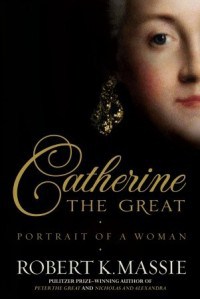
by fljustice | Dec 2, 2011 | Biographies, Books, History, Reviews, Wonderful Women
“Catherine the Great: Portrait of a Woman” by Robert K. Massie
From the book jacket:
“The Pulitzer Prize-winning author of Peter the Great, Nicholas and Alexandra, and The Romanovs returns with another masterpiece of narrative biography, the extraordinary story of an obscure young German princess who traveled to Russia at fourteen and rose to become one of the most remarkable, powerful, and captivating women in history.”
 Massie delivers a wonderfully researched and readable book. My knowledge of Catherine the Great was vague to the point of mythical. I had hazy memories of multiple lovers, a (possible) scandal about her and a horse, and a movie starring Greta Garbo. The lovers were real, but few; there was no mention of the horse; and the Garbo movie turned out to be about Queen Christina of Sweden who lived a century earlier. So much for memory.
Massie delivers a wonderfully researched and readable book. My knowledge of Catherine the Great was vague to the point of mythical. I had hazy memories of multiple lovers, a (possible) scandal about her and a horse, and a movie starring Greta Garbo. The lovers were real, but few; there was no mention of the horse; and the Garbo movie turned out to be about Queen Christina of Sweden who lived a century earlier. So much for memory.
To say Catherine is a fascinating character is to do her a disservice. Massie shows her towering intellect, force of personality, and steely resolve from an early age. He also shows her craving for love and approval; denied in childhood and in her marriage. But her story is not a simplistic psycho-drama, it’s populated with complicated characters, shifting political agendas (both domestic and foreign), and colored with the burgeoning philosophies of the Age of Enlightenment. (more…)

 I’m back from New Zealand and–totally by coincidence–I’m hosting a New Zealand author. As readers of this blog know, I’m a Dickens fan. I can’t get enough of his quirky characters, dark settings, twisty plots and–yes!–even his social preaching. One of my favorites, Little Dorritt (reviewed here) features a debtor’s prison which is just as much a character as its human inhabitants. That’s why I was so pleased to score a copy of The Raven’s Seal a historical mystery written in the style of Dickens. The author Andrei Baltakmens is a Dickens scholar and plants an eighteenth-century prison in the heart of his novel. The gaol (jail for us in the US) broods over the prose and lurks in the background infusing the story with its dark presence. From the first paragraph:
I’m back from New Zealand and–totally by coincidence–I’m hosting a New Zealand author. As readers of this blog know, I’m a Dickens fan. I can’t get enough of his quirky characters, dark settings, twisty plots and–yes!–even his social preaching. One of my favorites, Little Dorritt (reviewed here) features a debtor’s prison which is just as much a character as its human inhabitants. That’s why I was so pleased to score a copy of The Raven’s Seal a historical mystery written in the style of Dickens. The author Andrei Baltakmens is a Dickens scholar and plants an eighteenth-century prison in the heart of his novel. The gaol (jail for us in the US) broods over the prose and lurks in the background infusing the story with its dark presence. From the first paragraph:






